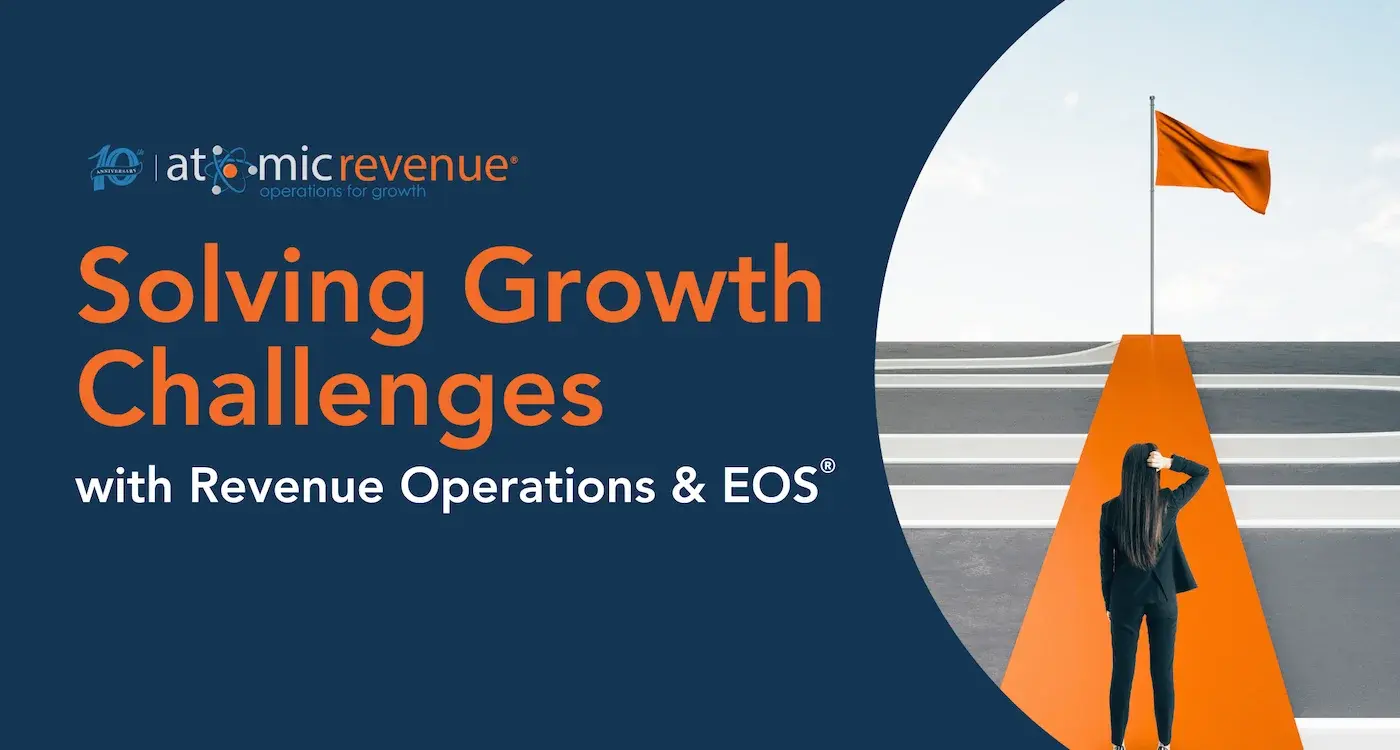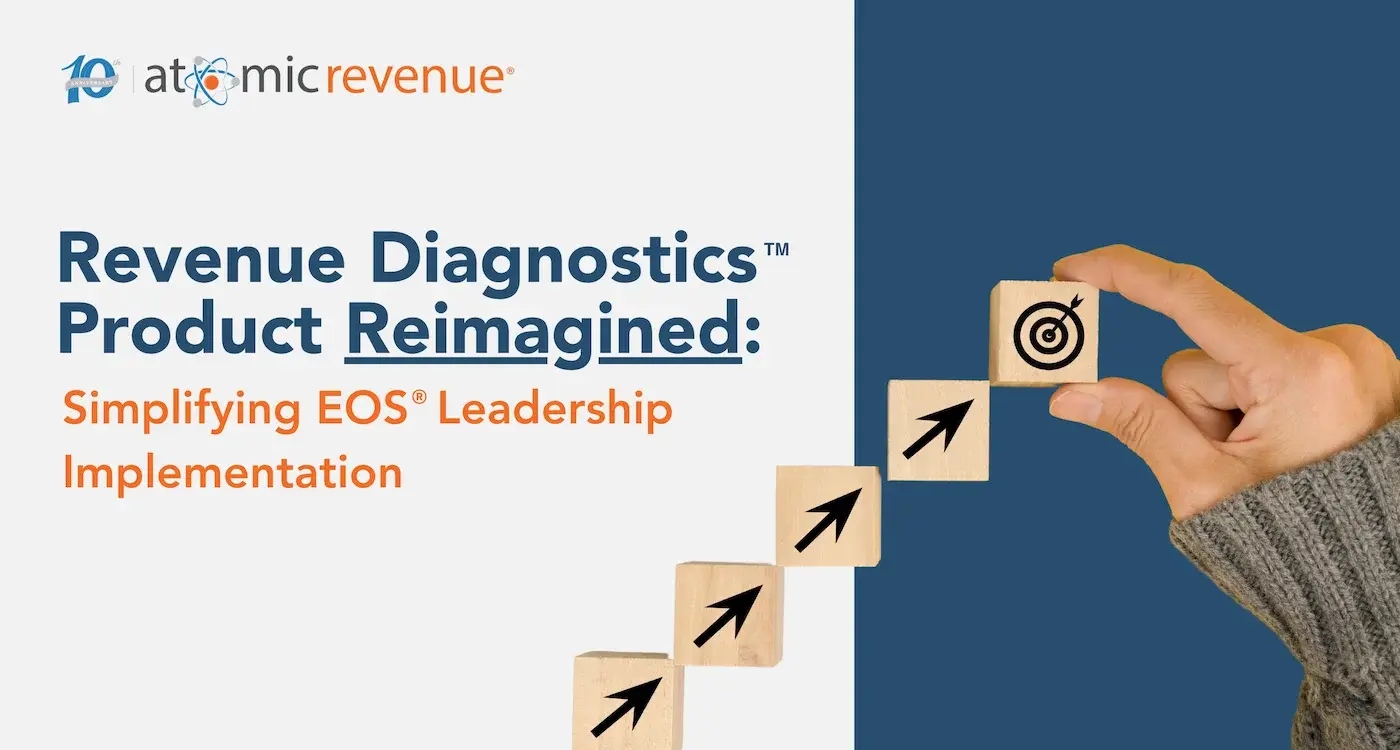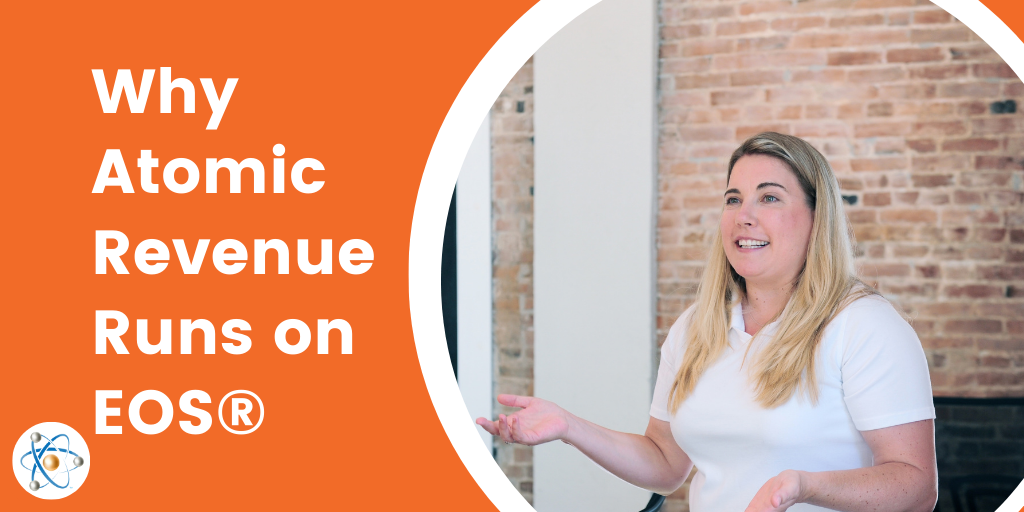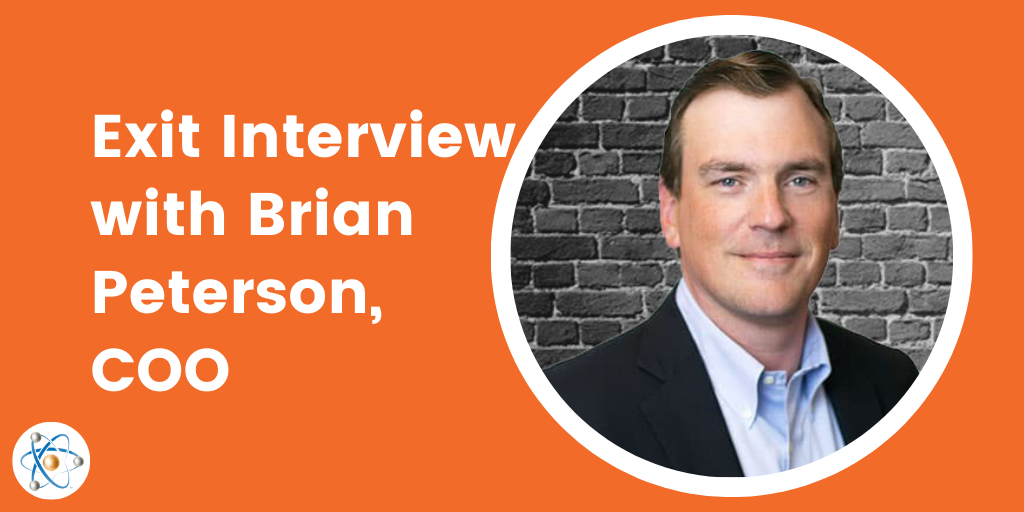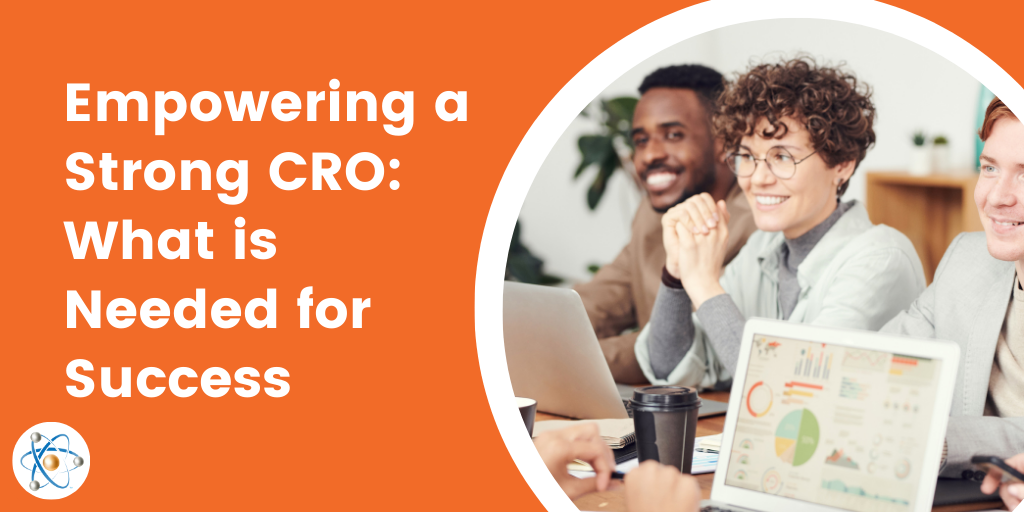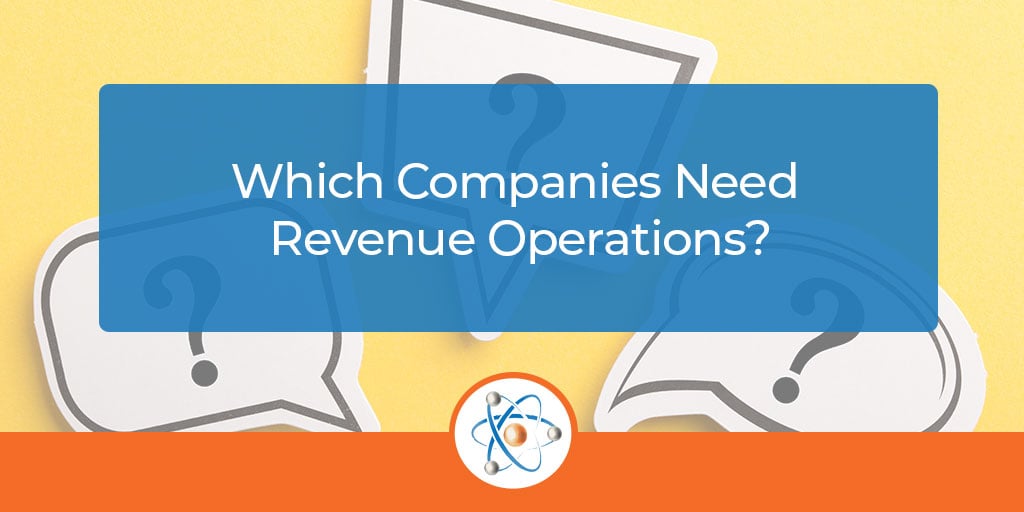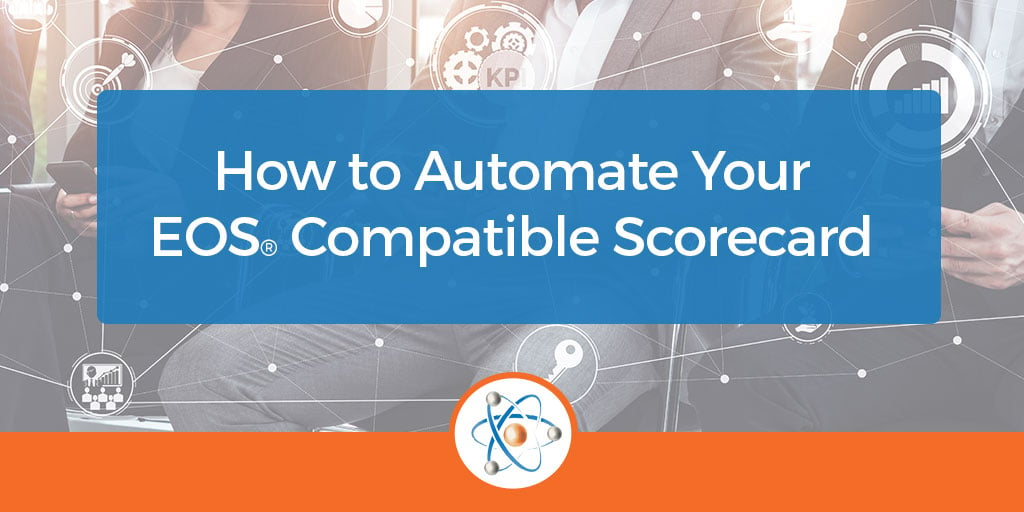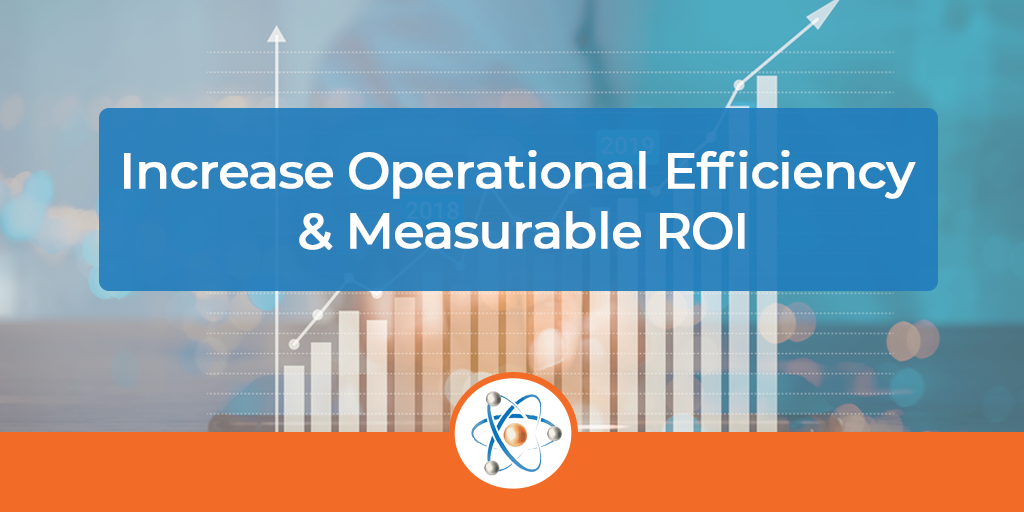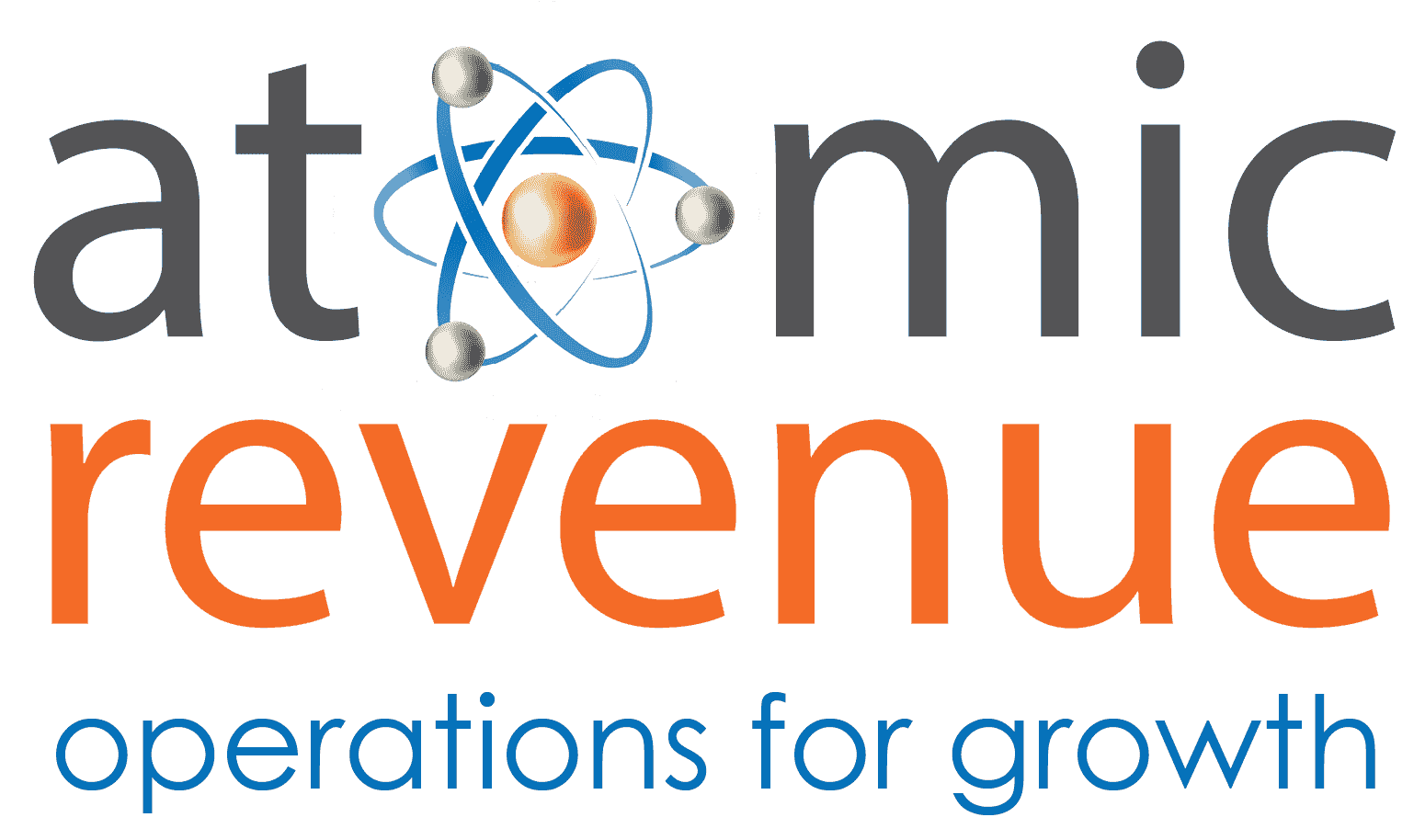Growth challenges often stem from misalignment across teams, inconsistent processes, and a lack of data-driven decision-making—all of which impact revenue production. Revenue Operations (RevOps), when implemented effectively, breaks down silos, standardizes processes, and creates accountability to drive sustainable growth.
Solving Growth Challenges with Revenue Operations and EOS
Revenue Diagnostics™ Product Reimagined: Simplifying EOS® Leadership Implementation
The Challenge: Great Insights, Tough Implementation
Revenue Diagnostics was designed to help companies understand and optimize End-to-End Revenue Production™—one of Atomic Revenue’s 3 Uniques™.
Atomic Revenue specializes in Solving Growth Challenges for B2B Engineering/ Technical Services Firms, and Technology Service Providers, driving predictable profitability. We align all the parts of a business, measure all outcomes, and empower people through process and data for end-to-end revenue production™ to help companies reach their ultimate objective — real, sustainable growth. So why did we choose to run on EOS when we already help our clients in the same cadence?
In 2019, when Brian Peterson joined Atomic Revenue as a consultant, Atomic Revenue was growing at a rapid pace – from a nationwide, entrepreneurial team of seven, then twelve, then on to 42 within a year. There was no doubt, with our rapidly growing company and unusual structure, we needed his expertise and skillset to develop an operations and finance strategy, and a fine-tuned structure to support revenue growth.
On a scale of 1-10, how much does your company value customer advocacy? To tell you the truth, viewing customer advocacy as anything less than a 10 (major business priority) means that your company is likely missing out on opportunities to reduce customer acquisition cost, boost brand awareness, and increase revenue. That’s why customer advocacy makes up ⅓ of Revenue Operations, along with lead generation and sales conversion. It’s a vital part of business growth!
An effective Chief Revenue Officer is an integrator. A successful facilitator. A tech-savvy leader who is the champion of companywide objectives across all departments. Ultimately, a CRO knows when, where, and how to ensure anything and everything that affects revenue outcomes – all people, process, and data – is on track.
Is this a trick question? Every company needs revenue operations! But what is it exactly? It is the entire process by which a business brings in dollars to fund its existence. Although many consider revenue operations to be a function of sales and marketing, it’s this exact oversimplification that limits profitability and often proves to be detrimental for small to midsize businesses.
The beauty of the EOS® model is that it provides consistent, repetitive guidelines and tasks that help you streamline how you monitor your business’s success through habit development. By using your EOS-compatible scorecard to set up your goals and keep them consistent, you’ll eventually track your actions out of habit, without thinking about the tracking aspect. It becomes second nature when you switch from thinking about HOW your tasks are tracked to accepting that the data IS tracked. This allows you to focus on developing actionable plans based on the reported data.
How to Increase Operational Efficiency & Measurable ROI with EOS
Revenue Operations, as defined by Atomic Revenue, is about optimizing the entire process of how revenue flows through your company, combining strategy and tactics for lead generation, sales conversion, and customer advocacy. In order to implement rev ops, you must understand how to improve operational efficiency.
How to Improve Operational Efficiency
The underlying principles of revenue operations and your people, process, and data should all work in harmony to facilitate efficient end-to-end revenue production™

